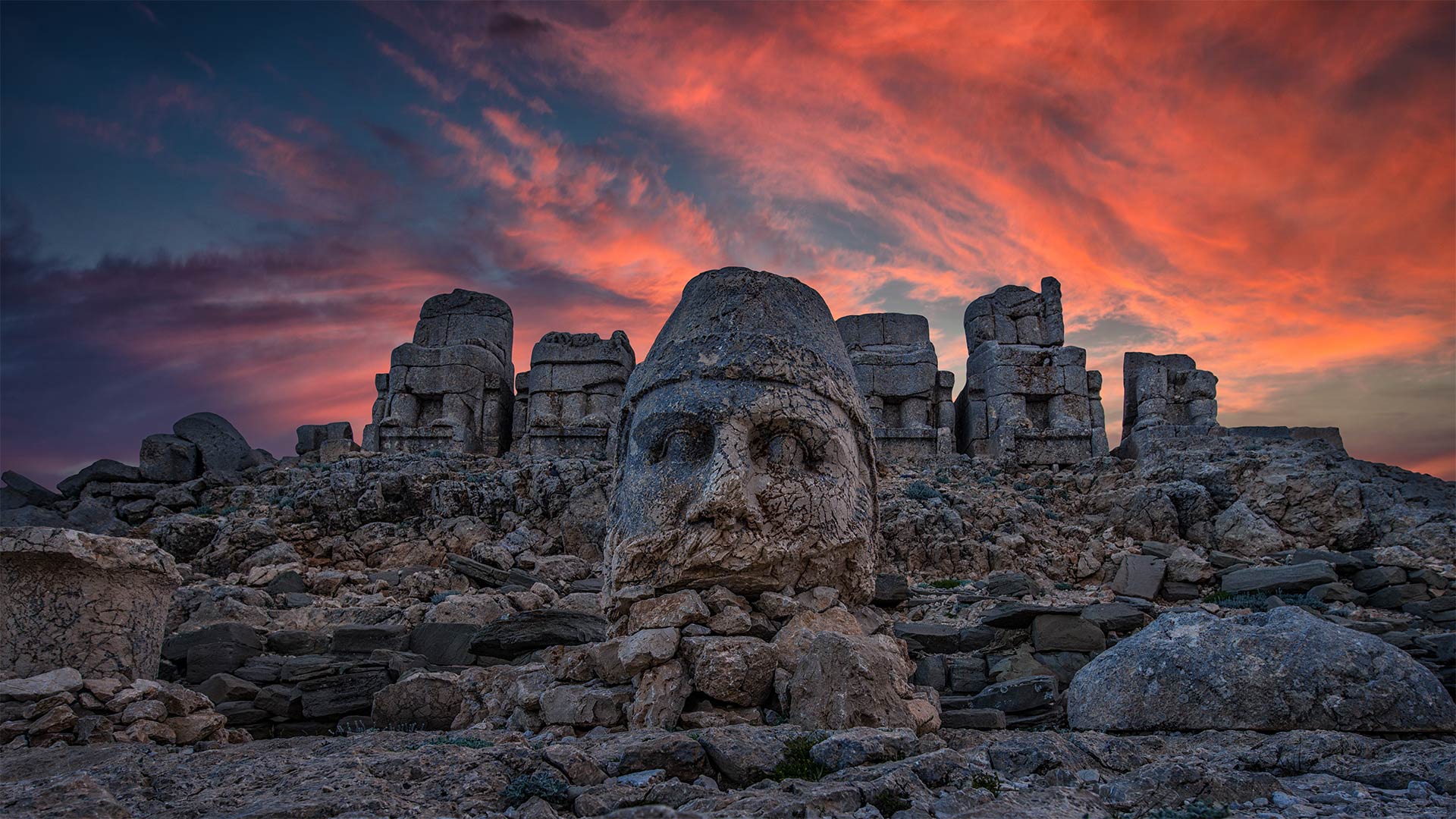内姆鲁特山上巨大的石灰岩雕像,土耳其阿德亚曼 Colossal limestone statues on Mount Nemrut, Adıyaman, Turkey (© Peerakit JIrachetthakun/Getty Images)

内姆鲁特山上巨大的石灰岩雕像,土耳其阿德亚曼 Colossal limestone statues on Mount Nemrut, Adıyaman, Turkey (© Peerakit JIrachetthakun/Getty Images)
The mountaintop of toppled gods
The ruins on Mount Nemrut depict a gaggle of gods from both Greek and Persian traditions, plus a few deities that King Antiochus I made up himself. The range of spiritual faiths represented in the statues found near the 7,000-foot summit reflects southeastern Turkey's long history as a crossroads of cultures. Today, the derelict statues are protected as a UNESCO World Heritage Site.
In 70 BCE, Antiochus took power here in Commagene, one of several small onetime states formed from the shambles of the Seleucid Empire. Looking to unify his populace, he synthesized a mythology that hailed Greek and Persian figures, from Ares to Zarathustra—plus the king himself and his family. Antiochus' claim to godhood wasn't eternal, as he was deposed in 31 BCE, but sometime before that he cemented his customized state religion in history by having its partial pantheon—including, of course, himself—carved into stone statues on the peak overlooking his kingdom.
被推翻的神的山顶
涅姆鲁特山上的废墟描绘了希腊和波斯传统的众神,加上安提约克一世国王自己创造的一些神。在7000英尺高的山顶附近发现的雕像所代表的各种精神信仰反映了土耳其东南部作为文化交汇点的悠久历史。今天,这些被遗弃的雕像被联合国教科文组织列为世界遗产。
公元前70年,安提约克在科马根尼掌权,科马根尼是塞琉西帝国废墟中形成的几个小国家之一。为了统一他的人民,他合成了一个神话,颂扬希腊和波斯的人物,从阿瑞斯到查拉图斯特拉,再加上国王本人和他的家人。安提约克对神性的要求并不是永恒的,因为他在公元前31年被废黜,但在此之前的某个时候,他通过拥有部分万神殿(当然包括他自己)在俯瞰王国的山顶上雕刻成石像,巩固了他定制的国教在历史上的地位。
评论已关闭